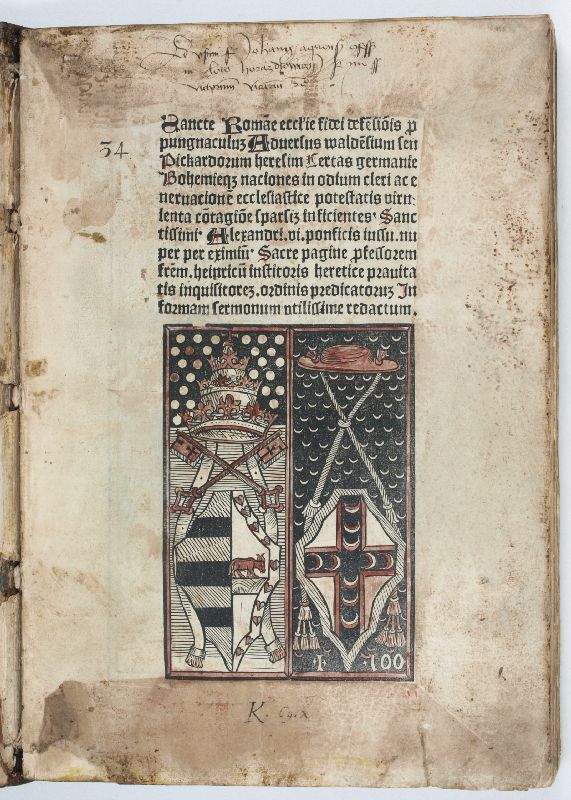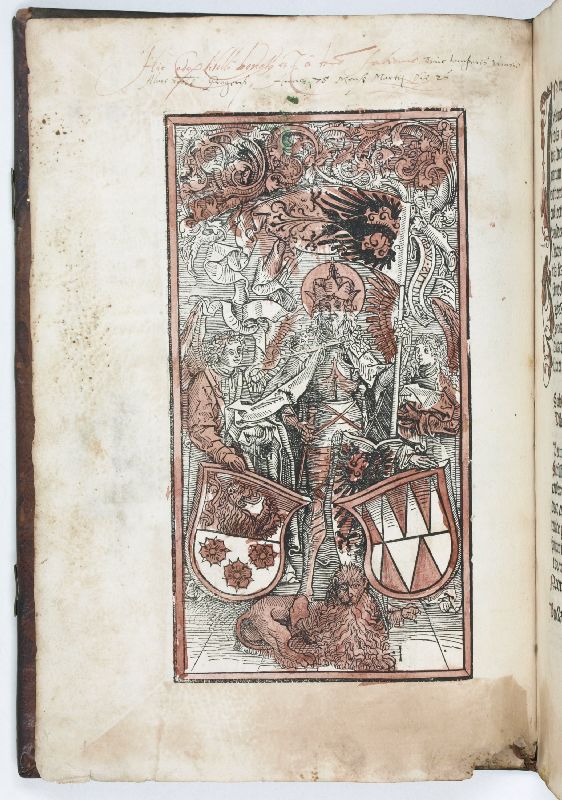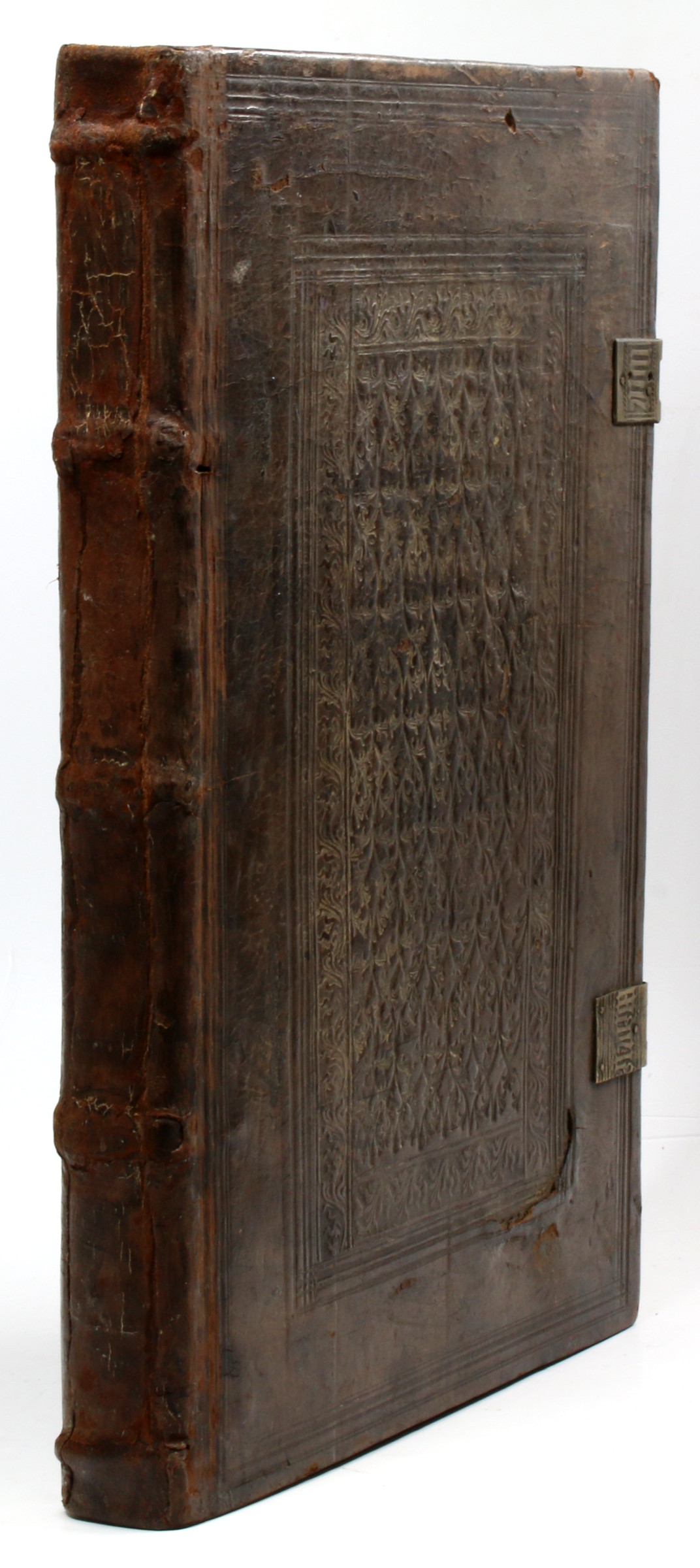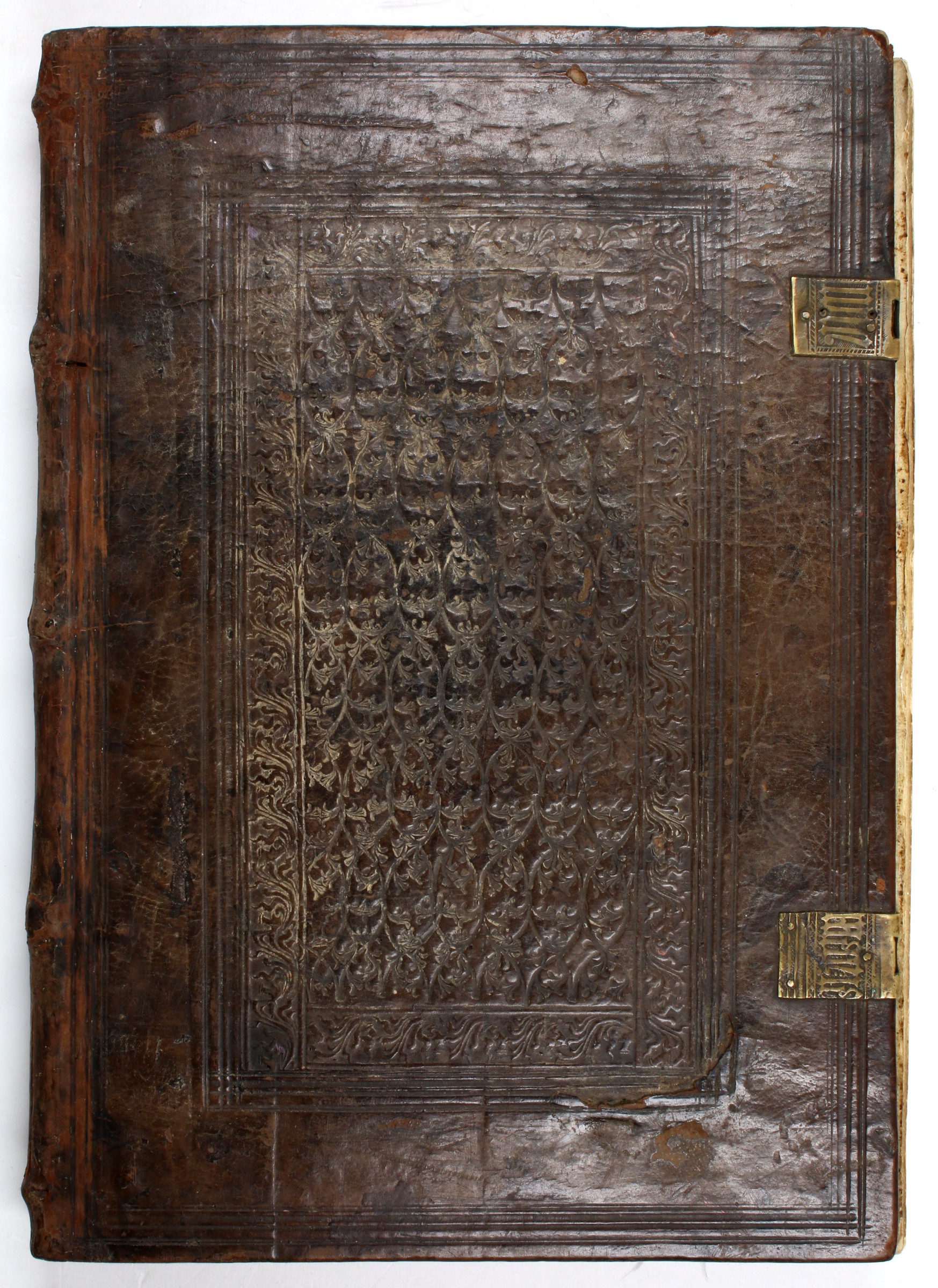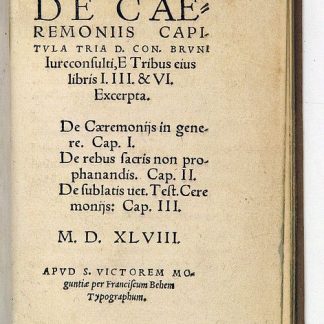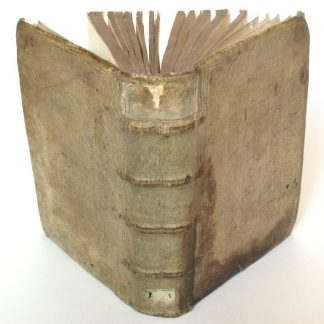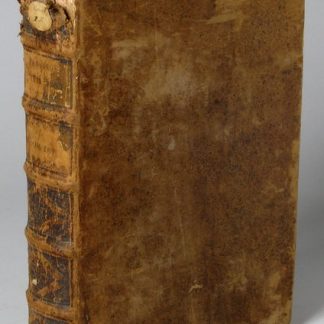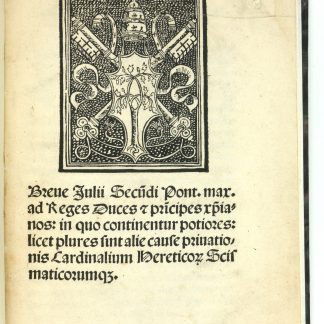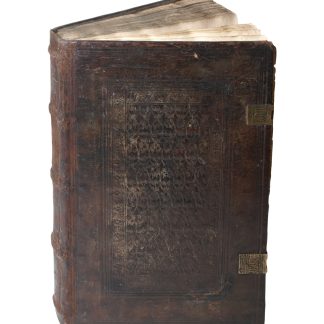A Complicated Incunable for a Bohemian Witch-Hunter
Sancte Roma[n]e eccl[esi]e fidei defe[n]sio[n]is p[ro]pungnaculu[m] [!] Adversus walde[n]sium seu Pickardorum heresim Certas germanie Bohemieq[ue] naciones in odium cleri ac enervacione[m] ecclesiastice potestatis virnlenta [!] co[n]tagio[n]e sparsi[m] inficientis [...].
Folio. 128 ff., complete. With half-page title woodcut, full-page woodcut on verso, large woodcut initial, and printer's device at the end (all with contemporary touches of red ink), as well as numerous fleuronee and lombardic initials in red and green, including five figurated initials. Rubricated throughout. Contemporary blindstamped dark brown calf over wooden boards, remains of engraved brass clasps.
€ 85,000.00
First edition of this polemic against the Bohemian Brethren, written by the author of the notorious "Malleus Maleficarum": a "Bulwark of Faith of the Holy Roman Church Against the Heresy of the Waldensians and Picards". Extremely rare: the present copy represents the hitherto unknown first impression of the first edition, still bearing a slightly different title; all other known copies printed that same year (three via OCLC, one in the Scientific Library of Olomouc, one in the Bavarian State Library), as well as the 1502 second edition, are entitled "Sancte Romane ecclesie fidei defensionis clippeum adversus waldensium seu pickardorum heresim, certas Germanie Bohemieque nationes in odium cleri ac enervatioe ecclesiatice potestatis virulenta contagione sparsim inficientes" (changing the - misspelled - "bulwark" into a "shield"). Quire signatures and pagination depart from those stated by OCLC in several details. In particular, the head-over-heels "u" in "virulenta" (here printed as "virnlenta", corrected in other editions), identifies the present variant as the earliest one.
In the year 1500, 15 years after he first published his "Malleus Maleficarum", Institoris had been installed by Pope Alexander VI as inquisitor to Bohemia and Moravia, where he was to take action agains heretics, sorcerers, and witches (cf. Tschacher). In the present work, his last to see publication, "he once more invokes his 'Malleus' and his earlier sermons against witchery and its doubters. The Bohemian Waldenses, he argues, had not only perpetrated numerous heresies, but also questioned the legitimacy of the witch trials. It is telling that Kramer, in his final polemic, would interpret the heresies of the Waldenses and witches as conjoined harbingers of the approaching apocalypse" (ibid.). The inquisitor who prided himself on having sent no fewer than 200 witches to the stake discusses other heresies as well: fol. 86ff. contains an entire chapter "De origine legis machometice".
One of the most extensive and technically ambitious works to leave the press of the itinerant German printer Konrad Baumgarten, active in Danzig, Olomouc, Breslau, and Frankfurt/Oder between 1498 and 1509. The page count is exceedingly confused, as in all copies. Indeed, only a single leaf in the entire "a" gathering bears a signature: the second, counted as "a iii" in error; thus agreeing with all copies available for comparison. The count of the first four leaves in our copy has therefore been corrected to "a i-iv" in red ink by a contemporary hand.
From the library of the disputatious Bohemian Franciscan friar John Aquensis, who in 1502 was to publish his own polemic against the "Picards", with his marginalia and his autograph ownership on the title page. "Although Johannes Aquensis, Jan Vodnansky in Czech, was one of the most active Catholic writers at the turn of the Middle Ages to the Age of Reformation, he has been largely ignored by scholarship so far. Born in Vodhany (some 30 kilometers to the north-west of Budweis and considered Utraquist) around 1460, he attended the school of St. Henry's in Prague since 1473, later studying Divinity at the University there. After obtaining his Bachelor's degree in 1480, he joined the Observant Franciscans and soon became one of the most vocal antagonists of the Utraquists, Begards, Waldensians, Bohemian Brethren, and other heretics. He disappears after 1534 [...] Most of his works, almost entirely ignored by scholarship but apparently marked by a curious mixture of erudition, bellicose dialectics, vivid imagination, and credulity, are known in manuscripts only; a very few were printed, and some must be presumed lost or awaiting discovery" (cf. Dietrich Kurze, Märkische Waldenser und Böhmische Brüder. Zur brandenburgischen Ketzergeschichte und ihrer Nachwirkung im 15. und 16. Jh., in: H. Beumann [ed.], Festschrift für Walter Schlesinger II [Cologne 1974], p. 456-502, at: 480).
Of the utmost rarity: this present first edition is not listed in German or international auction records. The last copy of any edition in the trade was that formerly in the Broxbourne collection (1502 second ed.: Sotheby's, 8 May 1978, lot 408, to Breslauer).
Folio (220 x 315 mm). 128 ff. (a-b8, c-d6, e4, f6, g4, h-p6, q4, r-x6, y4; page count: title-page, iii, v, iiii, v-ix, v, xiii, xii, [2 ff.], xiiii, xvi-xliii, xlvii, xlv-cvii, cix-cxxviii), thus complete. With half-page title woodcut, full-page woodcut on verso, large woodcut initial, and printer's device at the end (all with contemporary touches of red ink), as well as numerous fleuronee and lombardic initials in red and green, including five figurated initials. Rubricated throughout. Contemporary blindstamped gothic binding: dark brown calf over wooden boards, remains of engraved brass clasps.
Some staining to first and last leaf; occasional insignificant waterstaining, otherwise very clean, showing very little browning. Altogether an excellent copy in its contemporary, original binding. The individual blindstamps could not be traced in the Kyriss or Schunke collections; the clasp hitches are engraved with an invocation of the Virgin ("MARIA AVE"). Text carefully rubricated throughout; the inhabited initials depict dragons and other mythical creatures, as well as the bearded head of an old man.
Not in VD 16 or ISTC. Cf. Panzer VII, 486, 1. Cf. OCLC 22369397. Zibrt III, 5181. Isaac 14475. Werner Tschacher, "Kramer, Heinrich (Henricus Institoris)", in: Lex. zur Geschichte der Hexenverfolgung, ed. G. Gersmann, K. Moeller & J.-M. Schmidt, s.v.


